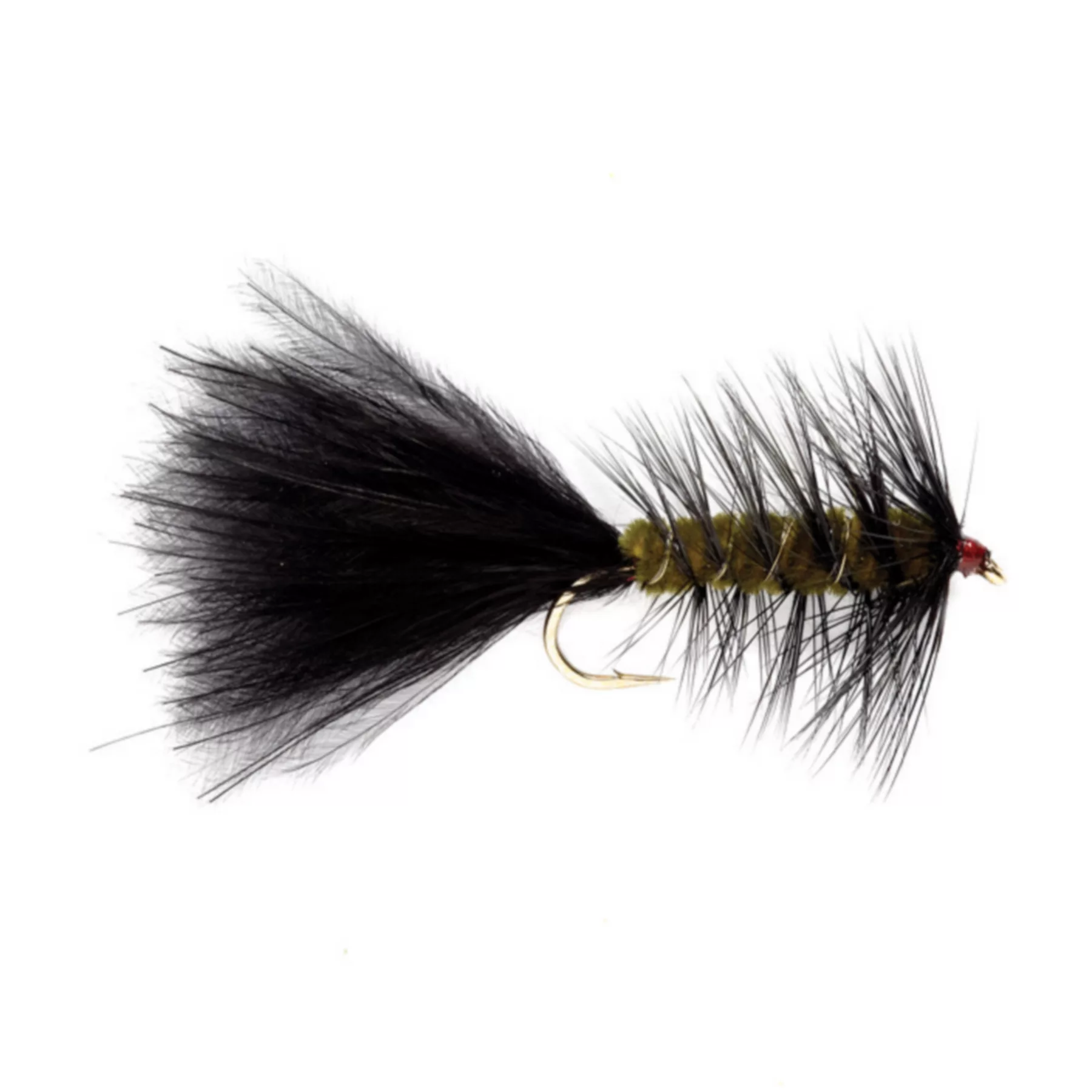The Woolly Bugger stands as a testament to the enduring allure of simplicity and effectiveness in fly fishing. Renowned as one of the most versatile and widely used streamer fly patterns ever created, the Woolly Bugger’s reputation precedes it on waters worldwide. Its ability to attract fish across a diverse range of environments and imitate various natural prey makes it an indispensable addition to any angler’s fly box.
Origins and Evolution
The Woolly Bugger’s origin story traces back to the venerated fly tyer, Russell Blessing, who first conceived the pattern in the 1960s. Initially designed as a simple leech imitation, the Woolly Bugger quickly gained popularity among anglers for its effectiveness in enticing strikes from a wide array of fish species. Over the years, anglers and tyers have adapted and modified the pattern to suit different fishing conditions and preferences, resulting in numerous variations while preserving the core elements that make the Woolly Bugger so successful.
Design and Characteristics
At its core, the Woolly Bugger features a relatively straightforward design, typically consisting of a weighted body, marabou or chenille tail, and palmered hackle. The fly’s weighted body allows for controlled sinking rates, making it suitable for fishing at various depths, from shallow riffles to deep pools. The marabou or chenille tail imparts lifelike movement in the water, mimicking the undulating motion of natural prey and enticing predatory strikes. Additionally, the palmered hackle adds bulk and movement while providing a semblance of legs or appendages, further enhancing the fly’s overall realism.
Versatility in Action
One of the Woolly Bugger’s most compelling attributes is its versatility in both presentation and application. Whether cast across fast-flowing rivers, retrieved slowly over stillwater, or stripped along the bottom of murky ponds, the Woolly Bugger consistently produces results. Its ability to imitate a wide range of aquatic forage, including crayfish, minnows, sculpin, leeches, and more, ensures that it remains effective in virtually any fishing scenario. Moreover, the Woolly Bugger’s effectiveness extends beyond trout fishing, proving equally enticing to bass, panfish, and even saltwater species.

Tips for Success
To maximize success with the Woolly Bugger, anglers should consider a few key strategies:
- Experiment with Size and Color: Woolly Buggers are available in a variety of sizes and color combinations. Be prepared to experiment with different options to match the prevailing conditions and the fish’s preferences.
- Vary Retrieval Techniques: Adjust your retrieval speed and pattern to mimic the behavior of different prey species. A slow, erratic retrieve may mimic injured baitfish, while a steady strip can imitate a swimming crayfish or leech.
- Target Structure and Cover: Concentrate your efforts around underwater structure, such as submerged logs, rock formations, and weed beds, where fish are likely to ambush prey. Cast your Woolly Bugger close to these features and vary your retrieve to entice strikes.
- Adapt to Water Conditions: Modify your Woolly Bugger presentation based on water clarity and flow. In murky or stained water, opt for larger, darker-colored patterns with exaggerated movement. In clear water, choose smaller, more natural-looking flies and employ a stealthier approach.
In the ever-evolving world of fly fishing, certain patterns stand the test of time, earning their place as essential tools in an angler’s repertoire. The Woolly Bugger exemplifies this enduring legacy, captivating generations of fly fishers with its simplicity, versatility, and unwavering effectiveness. Whether pursued by trout in mountain streams or bass in backcountry ponds, the Woolly Bugger remains a timeless classic that continues to inspire awe and elicit strikes wherever it’s cast.
Image/Source: Orvis





